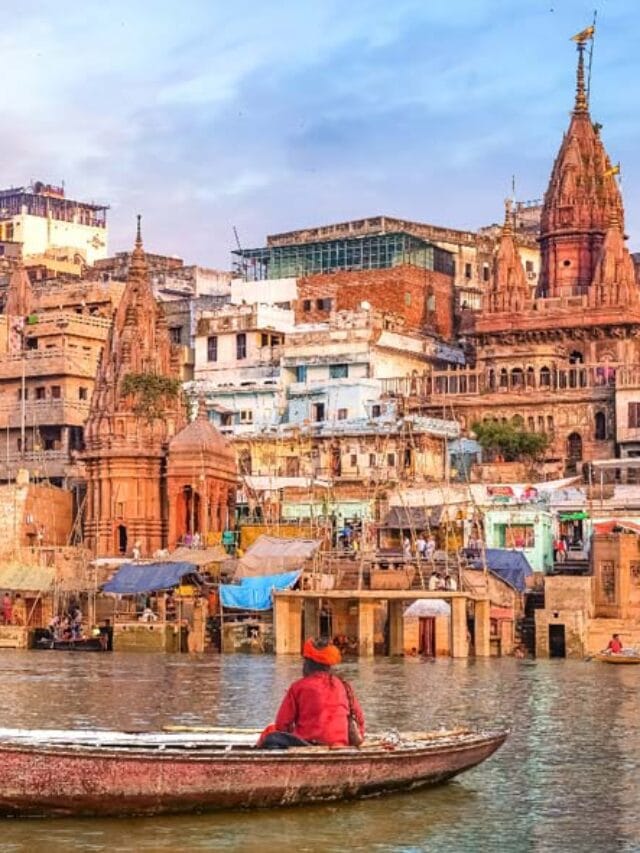91. The “Ash Mounds” from Deccan, indicate
- remnants of the settlements of neolithic cattle keepers
- kilns where pots were baked
- sites where personages were cremated
- sites where vedic sacrifices were performed
Show Answer
Correct Answer: remnants of the settlements of neolithic cattle keepers
Ash Mounds in the Deccan and Neolithic Cattle Keepers: Ash mounds found in the Deccan region of South India are associated with the Neolithic culture and are believed to represent remnants of settlements where Neolithic communities engaged in cattle rearing and pastoral activities. These mounds often contain ash deposits from hearths, suggesting the presence of ancient settlements and agricultural practices.
92. Ash mounds are related to the neolithic culture of which region?
- Northern Vindhya regions
- Kashmir
- East India
- South India
Show Answer
Correct Answer: South India
Neolithic Ash Mounds in South India: The presence of ash mounds in South India, particularly in the Deccan region, is indicative of their association with Neolithic cultures that thrived in the area. These mounds are significant archaeological features that shed light on the practices and lifestyles of ancient communities in South India during the Neolithic period.
93. In which period was the ‘wheel’ invented?
- Neolithic period
- Iron Period
- Paleolithic period
- Mesolithic period
Show Answer
Correct Answer: Neolithic period
Invention of the Wheel in the Neolithic Period: The invention of the wheel is attributed to the Neolithic period, signifying a crucial technological advancement. The wheel revolutionized various aspects of human life, particularly transportation, making it easier to move goods and materials. This innovation had far-reaching implications for agriculture, trade, and the development of early civilizations.
94. At which place the archeological remains of pit-dwelling were discovered?
- Burzahom
- Balakot
- Rakhigarhi
- Gufkral
Show Answer
Correct Answer: Gufkral
Pit-Dwelling Remains at Gufkral: Gufkral, situated in Kashmir, has yielded archaeological evidence of pit-dwelling structures. These findings provide valuable insights into the types of dwellings used by ancient inhabitants in the region, offering glimpses into their architectural practices and ways of life.
95. Megaliths found in South India belong to which period?
- Mesolithic age
- Iron Age
- Neolithic age
- Paleolithic age
Show Answer
Correct Answer: Iron Age
Megaliths in South India and the Iron Age: Megalithic burials found in South India are associated with the Iron Age. These megalithic sites feature large stones used to create graves, along with accompanying artifacts such as tools, weapons, pottery, and personal belongings. Black and Red Ware pottery is often linked to the megalithic cultures of South India, reflecting their distinct material culture.
96.Which culture is known for Grey pottery?
- Eastern Neolithic culture
- Jorwe culture
- Burzahom culture
- Malwa culture
Show Answer
Correct Answer: Burzahom culture
Burzahom culture is known for Grey pottery. Malwa culture is known for Black-on-Red Pottery, Eastern Neolithic culture is known for Brownish-red pottery, and Jorwe culture is known for Red pottery.
97. In which place is the Ochre Coloured Pottery culture (OCP) mainly found?
- Bihar
- Eastern UP
- Western UP
- Bengal
Show Answer
Correct Answer: Western UP
Ochre Coloured Pottery Culture (OCP) in Western Uttar Pradesh: The Ochre Coloured Pottery culture, represented by pottery with an ochre coloration, is primarily associated with the region of Western Uttar Pradesh. This archaeological culture provides insights into the material culture and practices of ancient communities in this area.
98. Which pottery is associated with the first discovery of iron in the upper Ganga valley?
- Northern Black Polished Ware
- Black-and-Red Ware
- Painted Grey Ware
- Black-and-Red Ware
Show Answer
Correct Answer: Painted Grey Ware
Discovery of Iron in the Upper Ganga Valley with Painted Grey Ware (PGW): The first discovery of iron in the upper Ganga valley is linked to the Painted Grey Ware (PGW) pottery. PGW is associated with the iron-using people of the Later Vedic period in ancient India. This pottery tradition is characterized by its distinctive painted designs and is significant for its association with the Iron Age and Vedic culture.
99. Which culture is known for Brownish-red pottery?
- Burzahom culture
- Jorwe culture
- Malwa culture
- Eastern Neolithic culture
Show Answer
Correct Answer: Eastern Neolithic culture
Pottery Traditions of Different Cultures: Various ancient cultures in India are known for specific pottery traditions: Burzahom Culture: Known for Grey pottery. Malwa Culture: Known for Black-on-Red Pottery. Eastern Neolithic Culture: Known for Brownish-red pottery. Jorwe Culture: Known for Red pottery.
100. Who established Vikramshila University?
- Ashoka
- Mahendrapala
- Dharmapala
- Devapala
Show Answer
Correct Answer: Dharmapala
Vikramshila University: Vikramshila University was founded by King Dharmapala and was one of the prominent centers of Buddhist learning in India during the Pala Empire’s rule. This renowned institution was located in what is now the Bhagalpur district of Bihar. Alongside Nalanda University, Vikramshila was considered one of the two most important Buddhist centers of learning during its heyday. Unfortunately, the university met a tragic fate when it was destroyed by Muhammad bin Bakhtiyar Khilji in approximately 1193 CE, leading to the decline of Buddhism in the region.
101. Which is the correct chronological order of the following cultures?
- Magdalenian → Mousterian -> Acheulian->>Abbevillian
- Magdalenian→ Acheulian → Mousterian → Abbevillian
- Abbevillian →>> Acheulian ->>> Mousterian ->>>Magdalenian
- Abbevillian ->> Mousterian ->> Acheulian ->>Magdalenian
Show Answer
Correct Answer: Abbevillian →>> Acheulian ->>> Mousterian ->>>Magdalenian
Chronological Order of Stone Tool Cultures: The statement mentions the correct chronological order of stone tool cultures during the Paleolithic period: Abbevillian → Acheulian → Mousterian → Magdalenian. This sequence represents the progression of stone tool cultures from early, rudimentary stages (Abbevillian) to more advanced and sophisticated forms (Magdalenian) over time. These cultures are distinguished by the types of stone tools and technologies associated with them, providing insights into the technological evolution of early humans.
102. From which places a larger series of cave paintings of prehistoric period was found? (1) Bhaja (2) Bhimbetka (3) Jaura (4). Ajanta Select the correct answer using the codes given below:
- 2 and 3
- 3 and 4
- 1, 2 and 3
- 2, 3 and 4
Show Answer
Correct Answer: 2 and 3
Cave Paintings at Bhimbetka and Jaura: Bhimbetka and Jaura are significant archaeological sites in India known for their prehistoric cave paintings. These cave paintings offer a glimpse into the artistic expressions and cultural traditions of early human societies. Bhimbetka, located in Madhya Pradesh, and Jaura, also known as Jerwa, have extensive collections of such rock art, providing valuable historical and artistic insights into the prehistoric periods.
103. What were the characteristics of Neolithic human life? 1. Agriculture 2. Animal Husbandry 3. Fixed Abode 4. Development of writing Select the correct answer using the codes given below :
- 1, 2 and 3
- 1, 2, 3 and 4
- 2 and 3
- 1 and 2
Show Answer
Correct Answer: 1, 2 and 3
Characteristics of Neolithic Human Life: The Neolithic period marked a pivotal transition in human history, characterized by the adoption of agriculture, animal husbandry, and settled living. Neolithic communities shifted from a nomadic hunter-gatherer lifestyle to one centered around farming, domestication of animals, and the establishment of permanent settlements. This shift in subsistence strategies and lifestyle was a significant milestone in human cultural and economic development.
104. The remains of Neolithic pit-dwelling have been discovered from- 1. Burzahom 2. Gufkral 4. Mahagara 3. Kuchai Select the correct answer using the codes given below:
- 3 and 4
- 1 and 2
- 1 and 4
- 2 and 3
Show Answer
Correct Answer: 1 and 2
Neolithic Pit-Dwelling Remains at Burzahom and Gufkral: Both Burzahom and Gufkral, located in the Kashmir region of India, have yielded archaeological evidence of pit-dwelling structures. These findings suggest that the Neolithic inhabitants of these regions constructed dwellings by excavating pits in the ground, providing insights into their architectural practices and housing patterns. The discovery of pit-dwellings contributes to our understanding of how early communities in these areas lived during the Neolithic period.








Leave a Reply